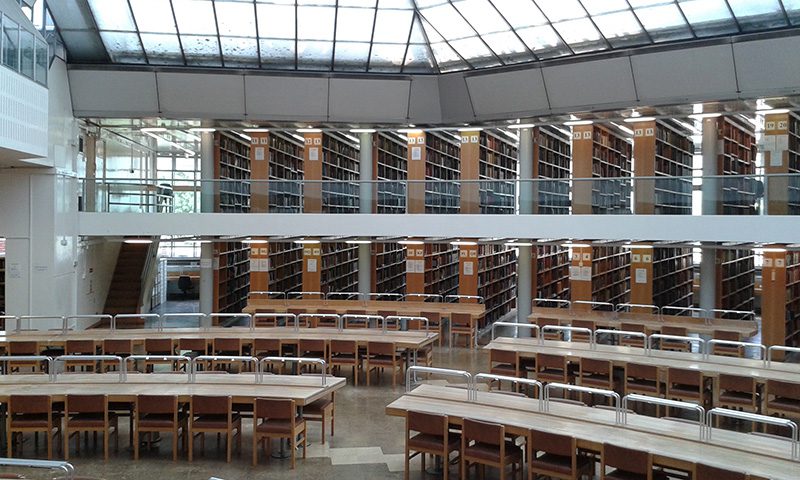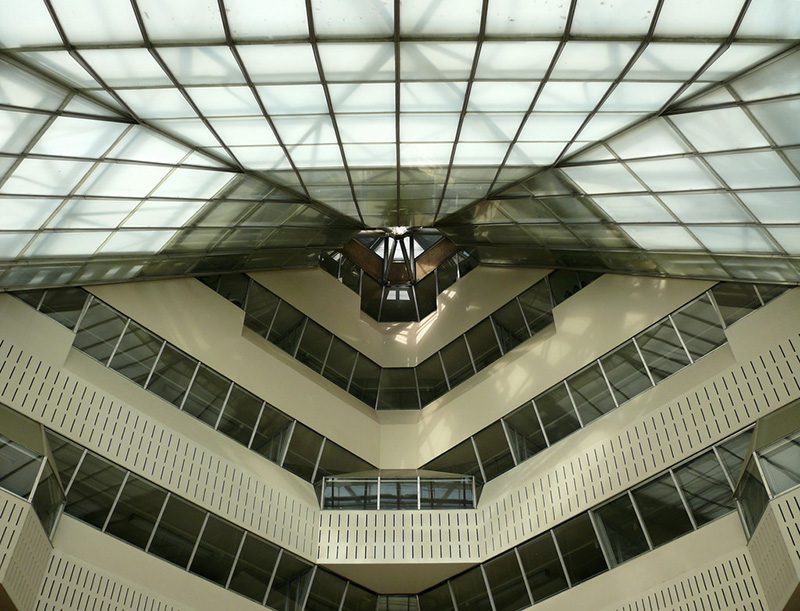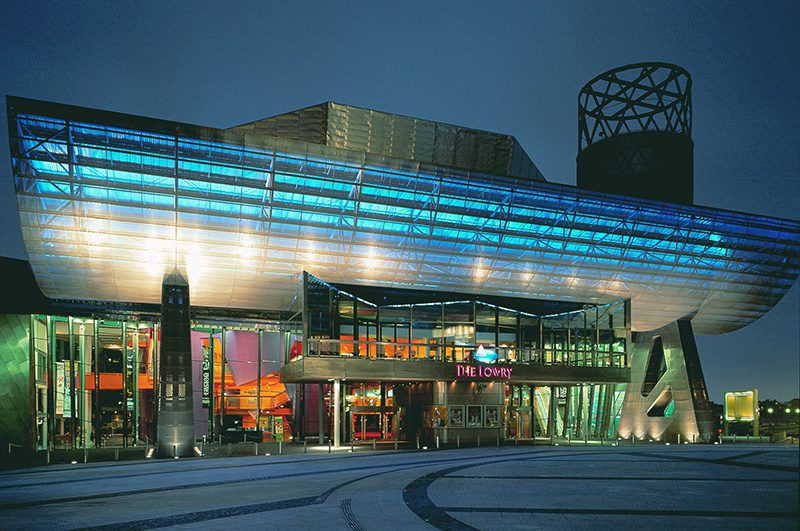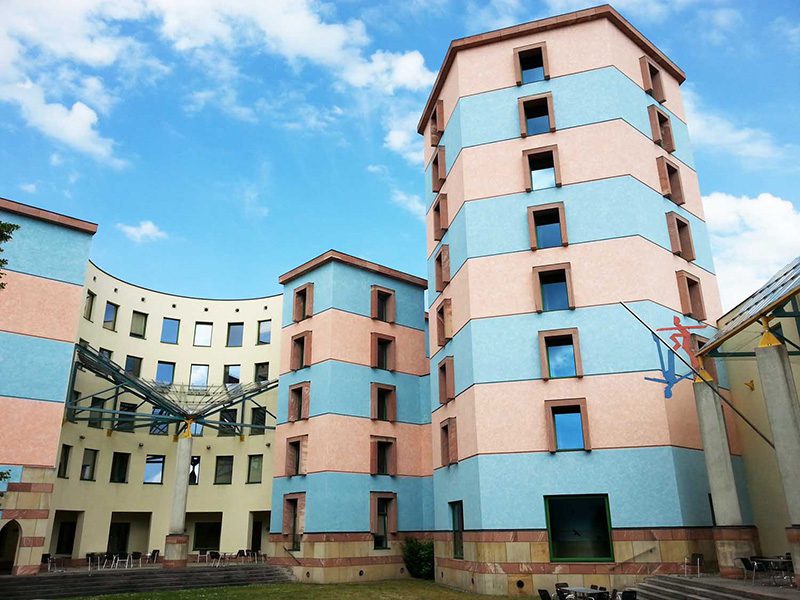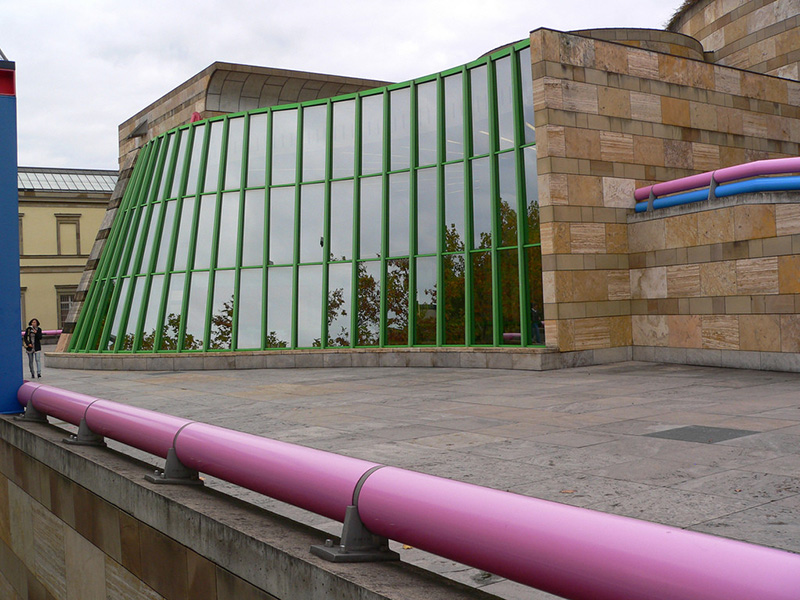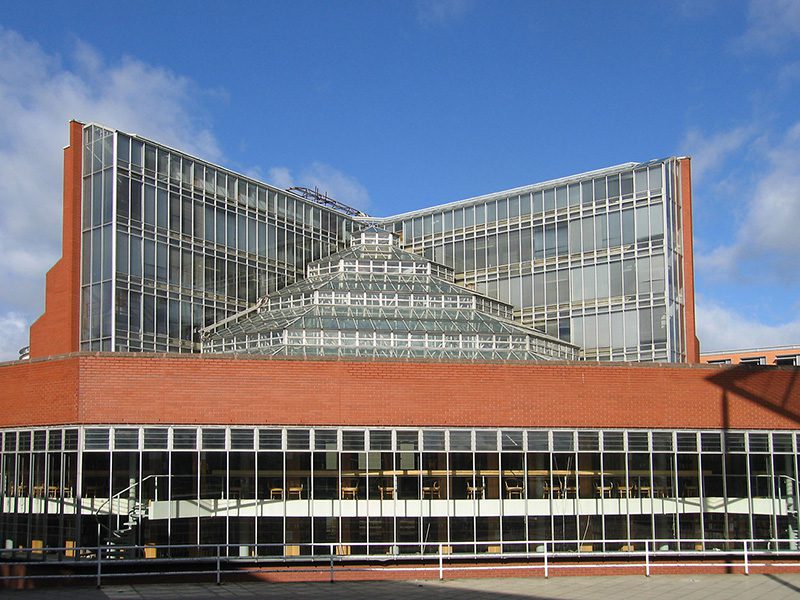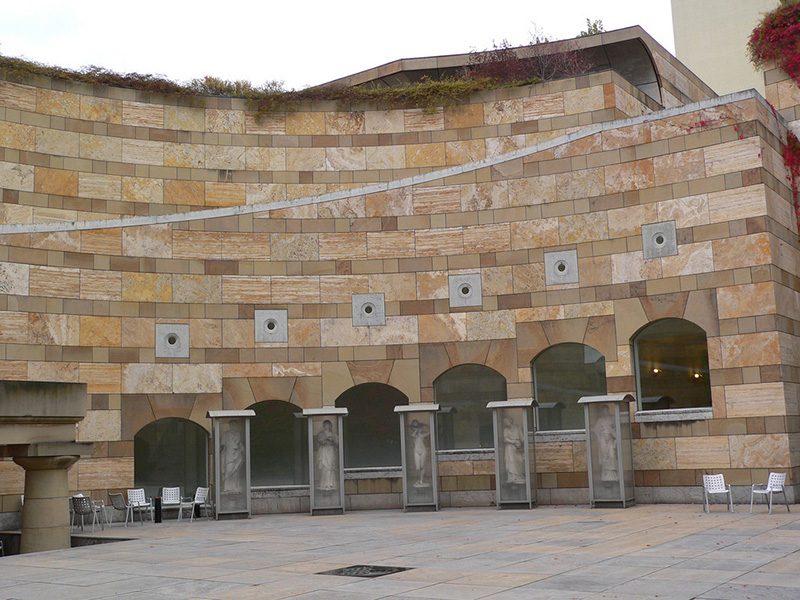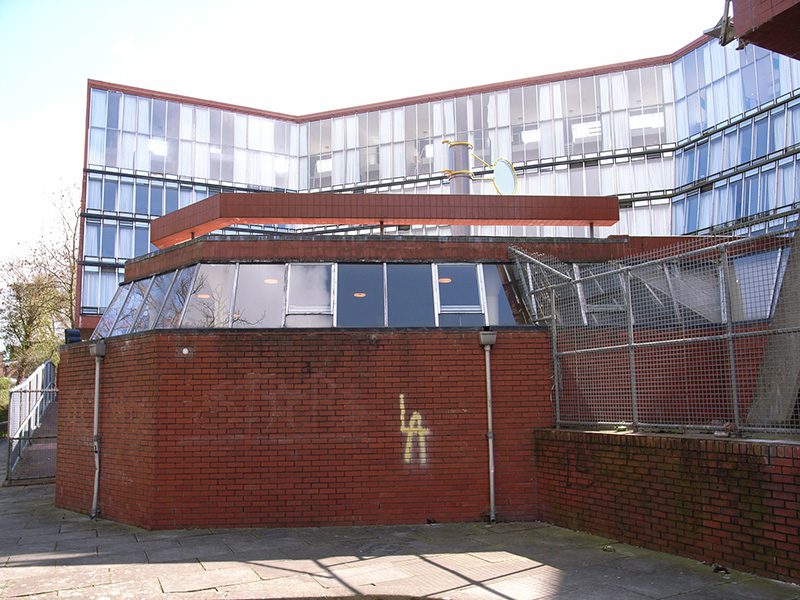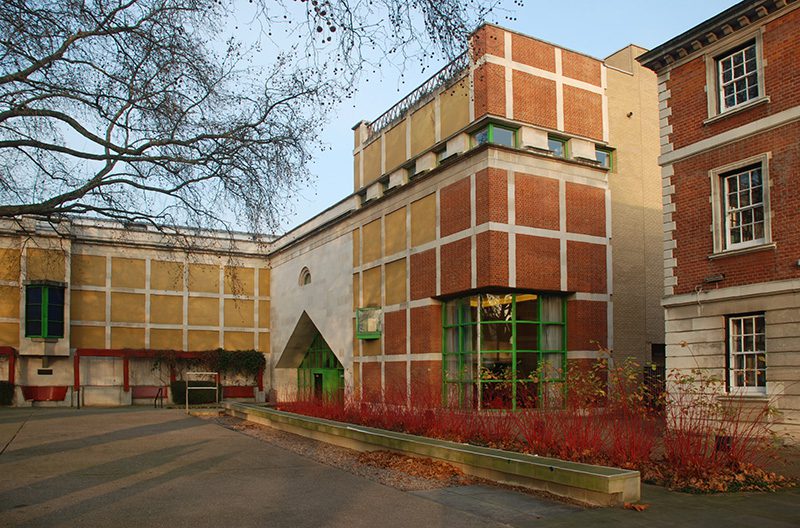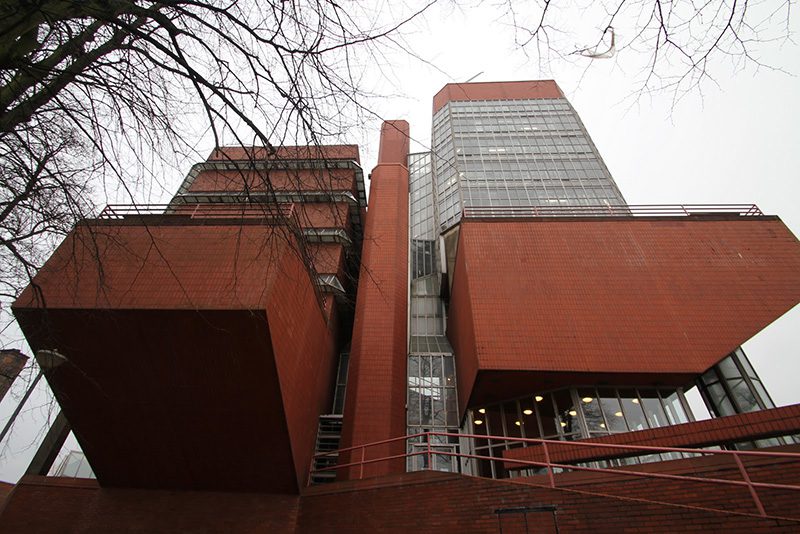ARCHITECTURE: James Stirling
 James Stirling (22/4/1926-25/6/1992), is considered as a leader of the great transition from the Modern Movement to the architecture of the New, an architecture that once more has recognized historical roots, once more has close connections with the buildings surrounding it, once more can be called a new tradition. Originality within this tradition is Stirling’s distinction: in the old “modern times”, 45 degree angles in plan and section, today, startling juxtapositions and transpositions of clearly classical and 19th Century references.
James Stirling (22/4/1926-25/6/1992), is considered as a leader of the great transition from the Modern Movement to the architecture of the New, an architecture that once more has recognized historical roots, once more has close connections with the buildings surrounding it, once more can be called a new tradition. Originality within this tradition is Stirling’s distinction: in the old “modern times”, 45 degree angles in plan and section, today, startling juxtapositions and transpositions of clearly classical and 19th Century references.
By Efi Michalarou
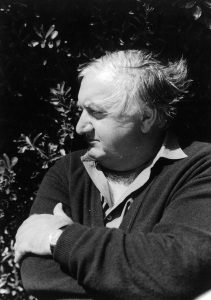 James Stirling is considered by many as the premier architect of his generation, an unparalleled innovator in postwar international architecture. Stirling was born in Glasgow. He was educated at the University of Liverpool School of Architecture and began his own practice in partnership with James Gowan in London in 1956. Over a seven-year period they designed some of the most significant projects of the time, most notably the garden apartments at Ham Common (1955-58), the seminal Engineering Building at Leicester University (1959-63), and the Cambridge University History Building (1964-67). In 1971, Stirling began to work in association with Michael Wilford. From this point on, the scale and number of his projects broadened to include museums, galleries, libraries and theaters. In the late 70s and 80s he led the Post-modern movement with the Staatsgallerie Stuttgart, the Clore Gallery, London and No. 1 Poultry, London. Although this trio of projects made him world famous, it was the Braun building in Melsungen, Germany and the many unrealised competition entries that pointed the way forward to what would have undoubtedly have been superstardom in the 21st Century. Since 1980, he has completed a major social sciences center in Berlin, a Performing Arts Center for Cornell University and such major museum projects as the Clore Gallery expansion for the Tate Gallery in London, the Arthur M. Sackler Museum, an addition to Harvard’s Fogg Museum and the competition winning design for the Neue Staatsgalerie in Stuttgart, Germany. In an article written in 1979 for the book, “Contemporary Architects”, Stirling said, “I believe that the shapes of a building should indicate—perhaps display—the usage and way of life of its occupants, and it is therefore likely to be rich and varied in appearance, and its expression is unlikely to be simple … in a building we did at Oxford some years ago (the Florey Building, Queen’s College, Oxford, 1971), it was intended that you could recognize the historic elements of courtyard, entrance gate towers, cloisters; also a central object replacing the traditional fountain or statue of the college founder. In this way we hoped that students and public would not be disassociated from their cultural past. The particular way in which functional-symbolic elements are put together may be the ‘art’ in the architecture. …If the expression of functional-symbolic forms and familiar elements is foremost, the expression of structure will be secondary, and if structure shows, it is not in my opinion, the engineering which counts, but the way in which the building is put together that is important”. Stirling received numerous awards and other expressions of public acclaim for his work. He was made an honorary member of the Akademie der Kunste in Berlin in 1969, an honorary fellow of the American Institute of Architects in 1976, and a fellow of the Royal Society of Arts in 1979. He received the Alvar Aalto Medal in 1977, the Royal Institute of British Architects Gold Medal in 1980, the Pritzker in 1981. The Stirling Prize, a British annual prize for architecture since 1996, was named after him.
James Stirling is considered by many as the premier architect of his generation, an unparalleled innovator in postwar international architecture. Stirling was born in Glasgow. He was educated at the University of Liverpool School of Architecture and began his own practice in partnership with James Gowan in London in 1956. Over a seven-year period they designed some of the most significant projects of the time, most notably the garden apartments at Ham Common (1955-58), the seminal Engineering Building at Leicester University (1959-63), and the Cambridge University History Building (1964-67). In 1971, Stirling began to work in association with Michael Wilford. From this point on, the scale and number of his projects broadened to include museums, galleries, libraries and theaters. In the late 70s and 80s he led the Post-modern movement with the Staatsgallerie Stuttgart, the Clore Gallery, London and No. 1 Poultry, London. Although this trio of projects made him world famous, it was the Braun building in Melsungen, Germany and the many unrealised competition entries that pointed the way forward to what would have undoubtedly have been superstardom in the 21st Century. Since 1980, he has completed a major social sciences center in Berlin, a Performing Arts Center for Cornell University and such major museum projects as the Clore Gallery expansion for the Tate Gallery in London, the Arthur M. Sackler Museum, an addition to Harvard’s Fogg Museum and the competition winning design for the Neue Staatsgalerie in Stuttgart, Germany. In an article written in 1979 for the book, “Contemporary Architects”, Stirling said, “I believe that the shapes of a building should indicate—perhaps display—the usage and way of life of its occupants, and it is therefore likely to be rich and varied in appearance, and its expression is unlikely to be simple … in a building we did at Oxford some years ago (the Florey Building, Queen’s College, Oxford, 1971), it was intended that you could recognize the historic elements of courtyard, entrance gate towers, cloisters; also a central object replacing the traditional fountain or statue of the college founder. In this way we hoped that students and public would not be disassociated from their cultural past. The particular way in which functional-symbolic elements are put together may be the ‘art’ in the architecture. …If the expression of functional-symbolic forms and familiar elements is foremost, the expression of structure will be secondary, and if structure shows, it is not in my opinion, the engineering which counts, but the way in which the building is put together that is important”. Stirling received numerous awards and other expressions of public acclaim for his work. He was made an honorary member of the Akademie der Kunste in Berlin in 1969, an honorary fellow of the American Institute of Architects in 1976, and a fellow of the Royal Society of Arts in 1979. He received the Alvar Aalto Medal in 1977, the Royal Institute of British Architects Gold Medal in 1980, the Pritzker in 1981. The Stirling Prize, a British annual prize for architecture since 1996, was named after him.


